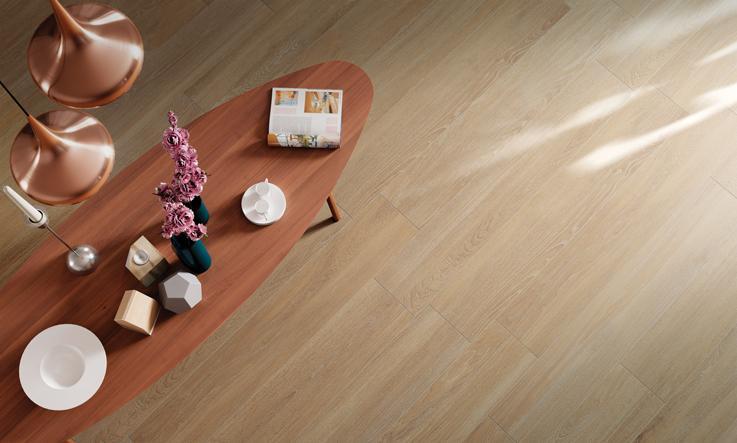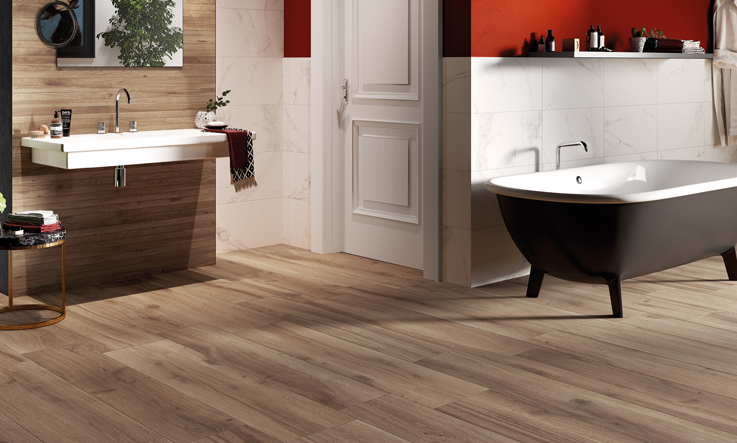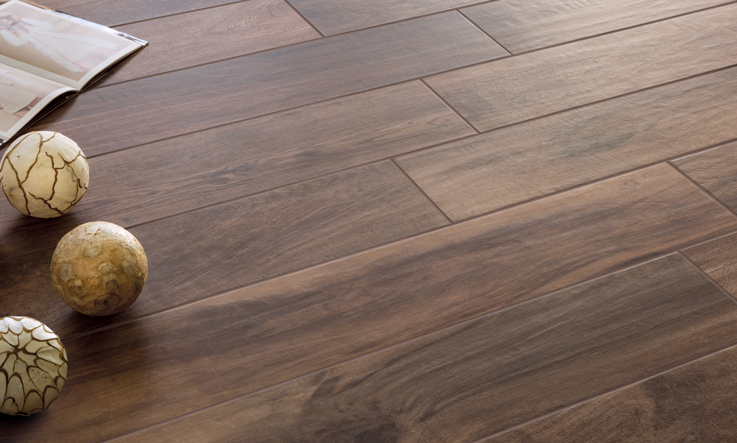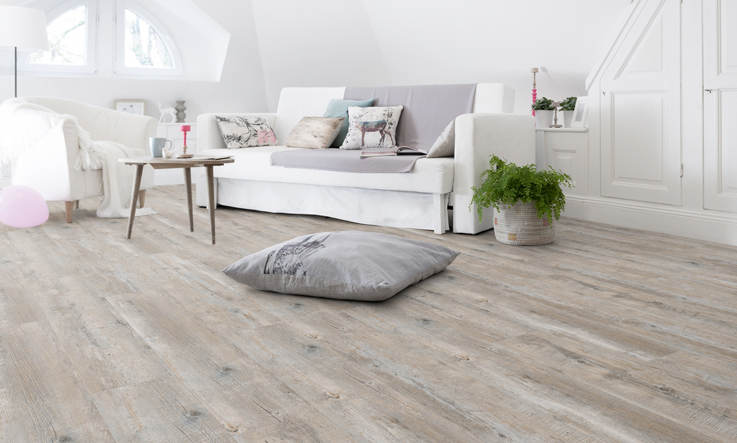
Wood effect porcelain stoneware, a global success
To date, wood-effect porcelain stoneware represents the most sold and sought-after flooring not only in Italy, but in many countries around the world. The reasons of this success, which has lasted for ten years, are to be found in the extraordinary evolution of the production of porcelain stoneware, which coincided with the advent of industrial digital printers.
The reasons of a success

In fact, wood-effect stoneware floors existed even before this innovation, but they were made with silk-screen techniques, which had the disadvantage of being able to use a very limited number of different graphics. Consequently, the floors were totally unrealistic when compared to traditional parquet, with tiles that always repeated themselves, creating unpleasant effects.
The advent of digital printers has allowed us to overcome this problem and now wood-effect tiles are characterized by highly sought-after graphics, which are extremely realistic but above all always different from each other. The very high number of different graphics, which in some formats even exceeds one hundred pieces, allows you to have a product which is comparable to parquet. If we also consider the practicality of stoneware, it is easy to understand how these floors were able to quickly establish themselves as best sellers and maintain their appeal over time.
Parquet or wood-effect stoneware? A choice of taste

The choice between parquet and wood effect stoneware becomes therefore an extremely personal choice and depends only on what we decide to give more importance to. Wood is a noble, living material, which was used for centuries for the heat it gives off and for the pleasure of walking on it with bare feet. Nevertheless, it is also often associated with wear, scratches, and high-maintenance, which would in a certain way limit our daily live. We must be careful, in fact, not to have a pebble stuck in the sole of the shoes and try to pay attention to all those objects that, if dragged, could ruin the surface of the floor. A periodic care with oils and waxes is also necessary. Those who prefer the natural beauty of wood, but have a slightly freer lifestyle, can orient themselves on wood-effect stoneware and care less about high-maintenance; the characteristics of porcelain stoneware tiles are in fact excellent and make them almost eternal products: resistance to scratches, acids, stains and wear. On the other hand, walking on a wood-effect stoneware floor gives a feeling of greater coldness and stiffness, and is certainly less pleasant than wood, although with the advent of underfloor heating this aspect is also no longer a problem.
We introduced the topic of underfloor heating on purpose: since stoneware, unlike wood, is an excellent conductor and a very bad insulator, it is easy to understand how if you opt for this heating technique, it is undoubtedly better if you choose porcelain tiles. In fact, this option will save you money both on installation costs (less quantity of pipes needed) and on water heating costs (less heat loss).
Finally, we cannot neglect how the ever-increasing success that wood-effect tiles have recorded in recent years is also, and perhaps above all, due to the continuous improvement of production techniques, which are now able to reproduce any type of essence with extreme fidelity, reproducing all the veins and reliefs of natural wood, in such a realistic way that you often have to bend over to touch the tile with your hand to understand if it is wood or ceramic.
LVT wood effect floors, a valid alternative

Finally, a word also on LVT wood effect floors. This new type of vinyl flooring is positioned halfway between natural wood and stoneware. Although it does not have the resistance of the latter, it is a step above wood for scratch resistance, need for maintenance and ease of installation. In addition, it gives a feeling of warmth and softness, which makes it more similar to wood than stoneware. Thanks to the almost total absence of joints, the final effect is exactly the same as that of the parquet, unlike stoneware wood-effect floors, where the interruption between one tile and the other, due to the joint, slightly compromises the look. The surface appearance of PVC slabs is extremely realistic both in graphics and in the light structure that recalls natural wood, even if at the moment LVT floors do not have the same number of different graphics that a wood-effect stoneware floor can boast.
In conclusion, the choice of home floors remains a totally personal decision and wooden floors maintain an eternal and unforgettable charm. Certainly, having the opportunity to choose materials that are so different in characteristics and nature, but which all have the same aesthetic effect is an advantage and an opportunity for all of us. The choice is yours.